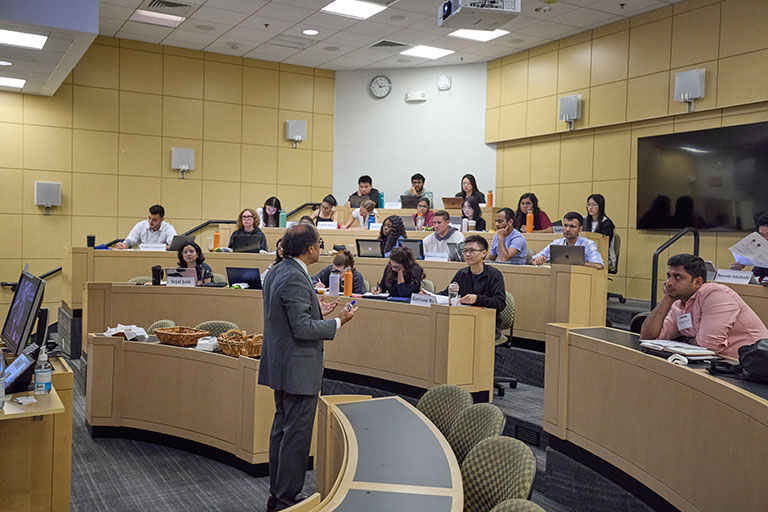-

Hear from Professor Monica Toft
Learn how Professor Monica Toft is shaping the study of global affairs and diplomacy at Fletcher.
Hear from Prof. Toft -

Explore Fletcher academics in action
Fletcher Features offers insights, innovation, stories and expertise by scholars.
Get global insights -
Get application tips right from the source
Learn tips, tricks, and behind-the-scenes insights on applying to Fletcher from our admissions counselors.
Hear from Admissions -

Research that the world is talking about
Stay up to date on the latest research, innovation, and thought leadership from our newsroom.
Stay informed -
Meet Fletcherites and their stories
Get to know our vibrant community through news stories highlighting faculty, students, and alumni.
Meet Fletcherites -

Forge your future after Fletcher
Watch to see how Fletcher prepares global thinkers for success across industries.
See the impact -

Global insights and expertise, on demand.
Need a global affairs expert for a timely and insightful take? Fletcher faculty are available for media inquiries.
Get in Touch
Gender Digital Divide Index Reveals We Still Have A Ways to Go
We spoke with Fletcher student Garima Gupta (MIB 22) about her work on the 2022 Gender Divide Digital Index (GDDI) and starting the conversation about gender bias and access to information technology.

As the world becomes increasingly digital, visibility into the digital gender gap is crucial. Every year, data shows a persistent gender divide in access to information and resources that promote economic and social mobility.
Recognizing the potential consequences of this gap, Women in Digital Transformation (WinDT), a woman owned and operated firm with the mission of driving digital development in developing countries, launched a Gender Digital Divide Index (GDDI) pilot study along with the DAKA Advisory, a strategic research firm dedicated to cyber security and e-government.
The pilot evaluates a country’s digital development in regard to each gender’s access to communication technologies using quantitative and qualitative data. The countries that were studied include Brazil, Chile, China, the Democratic Republic of Congo, Haiti, Mexico, Sweden, Ukraine, Vietnam, and the U.S.
Garima Gupta (MIB 22), one of the key consultants of the GDDI pilot study, said that the study was necessary to give a critical look into how existing gender biases and barriers have prevented women and girls from using information technology to the full extent of their male counterparts.
“The reason why we came up with this index was because we could see the gap for ourselves. Everyone talks about the gender gap in general and all the issues surrounding it in the real world and the consequences it can have on the economy,” Gupta said.
“With the onset of the pandemic we realized that the gap widened, so WinDT started the data collection process with the intent of sparking further dialogue about the issue and how to fix it.”
Gupta went on to say that the results of the pilot study would help decision-makers in government, business, and donor organizations clearly understand the dynamics of a particular economy through a gendered lens.
One of the key takeaways of the study was that strong foundations were necessary but not sufficient to overcome gender digital divides.
“Even though all of our top performing countries have the foundations in place such as internet access and communicative infrastructure, they do not perform all that well in terms of impact. In layman’s terms, just having the tools doesn’t even out the playing field,” she explained.
Another finding of the GDDI was a surprising lack of sex-disaggregated data from the government’s side even in the higher performing countries -- which could easily be rectified.
“That signaled to us that not a lot of institutions are paying attention to this issue, and we are rushing through the evolution of technology. It just confirmed our reasoning to take on the pilot. Decision-makers need a better grasp of the consequences associated with the technological divide, and guidance about how to implement improvements in policy.”
The full results were shared February 17 and are available at gddindex.com.

